Sugar Maple Lumber
- June 6, 2023
- 0 comment
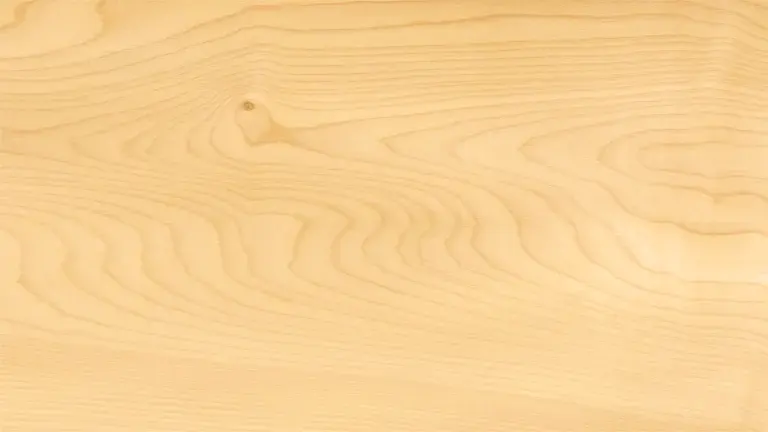
Sugar Maple, scientifically known as Acer saccharum, is a highly valued hardwood native to Eastern North America. It is known for its attractive light to reddish-brown color that darkens with age, and its fine, uniform grain. With excellent workability and durability, Sugar Maple is widely used in various applications. It is a popular choice for hardwood flooring, furniture, cabinetry, and veneer, thanks to its strength, stability, and timeless appeal. It is also prized in the musical instrument industry for its tonal qualities and is frequently employed in the construction of guitars and violins. Additionally, Sugar Maple finds its place in turned objects, specialty wood items, and as a decorative wood for its aesthetic charm. This renewable resource, with proper forest management practices, ensures its sustainability and continued availability for future generations.
| Property | Description |
|---|---|
| Common Name(s) | Sugar Maple, Hard Maple, Rock Maple |
| Scientific Name | Acer saccharum |
| Distribution | Eastern North America |
| Tree Size | 70-100 ft (21-30 m) tall, 2-3 ft (.6-.9 m) trunk diameter |
| Average Dried Weight | 44 lbs/ft3 (705 kg/m3) |
| Specific Gravity | 0.71 |
| Janka Hardness | 1,450 lbf (6,450 N) |
| Modulus of Rupture | 15,800 lbf/in2 (108.9 MPa) |
| Elastic Modulus | 1,830,000 lbf/in2 (12.62 GPa) |
| Crushing Strength | 7,830 lbf/in2 (54.0 MPa) |
| Shrinkage | Radial: 4.8%, Tangential: 9.9%, Volumetric: 14.8% |
Color/Appearance: Sugar Maple typically has a light, pale yellow to reddish-brown color. The wood tends to darken with age, sometimes taking on a slightly amber hue.
Grain/Texture: The grain of Sugar Maple is generally straight and uniform, with a fine, even texture. It may occasionally exhibit curly or quilted grain patterns, known as “bird’s eye” or “tiger stripe” figures, respectively.
Rot Resistance: Sugar Maple has good resistance to decay, making it suitable for various outdoor applications. However, it is not naturally resistant to fungal attacks and should be adequately treated or protected when used in direct contact with the ground or exposed to high moisture levels.
Workability: Sugar Maple is known for its excellent workability. It machines well, resulting in smooth surfaces. It can be stained, polished, and finished easily. However, due to its hardness, it can be challenging to work with hand tools and may require pre-drilling for screws and nails. It also has a tendency to burn when machined with high-speed cutters.
Odor: Sugar Maple generally has no distinctive odor when being worked.
Allergies/Toxicity: There are no known allergenic or toxic reactions associated with Sugar Maple.
Pricing/Availability: Sugar Maple is widely available and commonly used, especially in North America. It is a relatively affordable hardwood, though prices can vary depending on the quality, figure, and regional availability.
Sustainability: Sugar Maple is not currently listed on any endangered species lists, and its natural population remains stable. Proper forest management practices ensure the long-term sustainability of Sugar Maple as a renewable resource.
Common Uses
Sugar Maple is a versatile wood with a wide range of common uses due to its desirable properties and attractive appearance. Here are some additional details about its common uses:
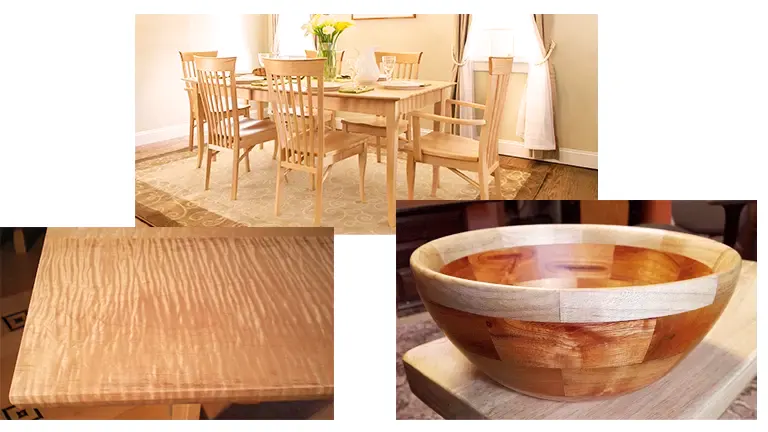
- Flooring: Sugar Maple is a popular choice for hardwood flooring due to its durability and hardness. It can withstand heavy foot traffic and resists wear and tear, making it suitable for both residential and commercial applications.
- Furniture: The hardness and stability of Sugar Maple make it an excellent option for furniture construction. It is commonly used for crafting chairs, tables, cabinets, and other high-quality furniture pieces. Its light color and fine grain provide a classic and timeless look.
- Cabinetry: Sugar Maple’s fine, even texture, and pale color make it a favored wood for cabinetry. It can be easily stained or finished to achieve various desired aesthetics, from contemporary to traditional styles.
- Veneer: Sugar Maple is also used in the production of veneer, which is thin slices of wood used to cover lower-cost substrates and create decorative surfaces. Its uniform grain and light color make it a popular choice for veneered panels in furniture, cabinetry, and interior design.
- Musical Instruments: Sugar Maple is highly regarded for its tonal qualities, making it a preferred wood for musical instrument construction. It is commonly used in the manufacturing of guitars, violins, drums, and other stringed instruments. Its resonance and stability contribute to the instrument’s sound quality.
- Turned Objects: Due to its workability, Sugar Maple is favored by woodturners for creating a variety of turned objects. Its fine, even texture, and ability to hold intricate details make it suitable for producing bowls, spindles, pens, and other decorative items.
- Specialty Wood Items: Sugar Maple’s attractive appearance and durability make it a desirable material for crafting specialty wood items. This includes cutting boards, kitchen utensils, decorative boxes, picture frames, and other small wooden accessories.
Comments: Sugar Maple is renowned for its hardness, making it a popular choice for applications that require strength and durability. Its light color and beautiful figure variations add aesthetic appeal to various woodworking projects.





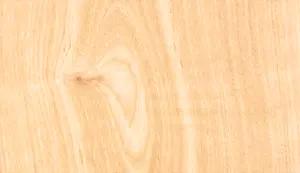






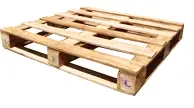
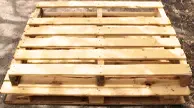
Leave your comment